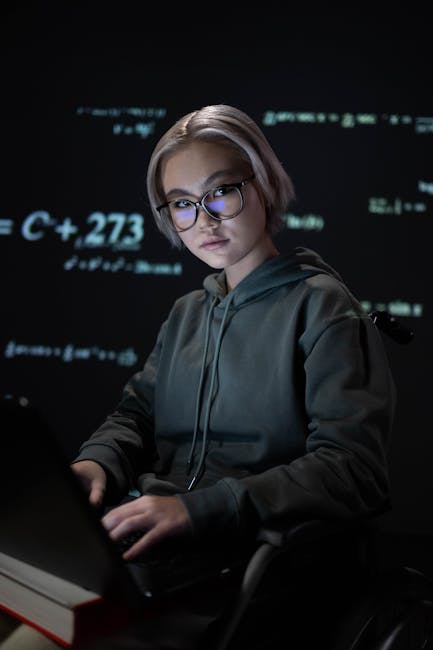The Duffer Brothers say that one of their upcoming shows shares DNA with ‘Stranger Things’ - Related to time, screenshot-reading, ‘stranger, once-in-a-lifetime, opportunity
DeepSeek hands European AI a once-in-a-lifetime opportunity

Every now and again, something momentous happens that changes the world and it’s never the same again. As Lenin once stated, “There are decades where nothing happens; and there are weeks where decades happen”.
Last week was such a week. The huge flappings of the biggest black swan reverberated around the tech world when China’s DeepSeek released its R1 model. What was this madness?
China was supposed to be lagging behind the US in the AI race and, indeed, as Marc Andreessen expressed, it was a Sputnik moment, referring to when the Russians beat the Americans in the first Space Race.
Naturally, stock markets and crypto went into meltdown. Nobody knew what was happening, chip companies such as Nvidia lost hundreds of billions and new-President Trump’s announcement of its $500 billion Stargate initiative was rendered as obsolete as Open AI’s business model.
And then everybody calmed down. Stock markets recovered and people put their heads back on the right way. However, it was a pivotal moment for tech, a small step for mankind and a giant leap for AI. Aside from tenuous Space analogies, what did it really mean?
Well, what it means is that it is obviously bad news for people selling AI, it’s very good news for those buying it. Apple’s price went up after DeepSeek’s release. That’s because when there are losers, there are always winners.
And so it may be for the state of European AI, it may be very good news indeed. Ten days ago, it seemed Europe had missed the boat and would never become an AI player. Now with prices slashed and the apparent lack of need for huge data centres and unattainable chips, Europe may have a once-in-a-lifetime opportunity to win the AI race.
So, what do AI companies across Europe think of DeepSeek's recent influence and does it offer an opportunity for Europe to catch up and overtake the US through innovation, and not funding? Perhaps it's an unique opportunity for them, so we asked some of them.
Some agree wholeheartedly. Elena Poughlia is the founder of Dataconomy and is working from Berlin with a 150-person, hand-picked contributors of AI mavens, developers and entrepreneurs to create an AI Ethics framework for release in March.
For European startups who have not built on ChatGPT, Perplexity and Claude models it’s great. It's cheaper, more sustainable because it needs less hardware and computing power… and an open source solution that changes the rules of the game.
The bubble was going to burst anyway and let’s see how that now pops. For existing startups, it could be the moment that turns off the lights or makes them throw their work to the bin. Now the bigger broader question is what will happen with our data and how will it be used - and how will this play out in the larger geopolitical game.
There are many precedents in the tech world where second movers have ‘piggy-backed’ on the shoulders of the tech giants who came before them.
The case of M-Pesa may be an African story, not a European one, but its release of a mobile money app ‘for the unbanked’ in Kenya almost 18 years ago created a platform that led the way for European FinTechs and banks to compare themselves to… and imitate.
In DeepSeek’s case, European AI startups will not ‘piggyback’, but rather use its release to springboard their businesses. To supercharge their businesses… that is if they get it right.
Alex Ball is the investment director at London-based Web3 and AI "Venture Builder" Block Dojo and he implies that AI startups need to think about the end user, not the provider.
AI startups have been chasing the wrong trophy. DeepSeek just dropped, and for a moment, it looks like the game has changed. But by next month? There’ll be another. And another. The cycle never stops.
Meanwhile, a different kind of AI firm has been playing a longer game—one that isn’t about who has the best model, but who owns the relationship with the user. ChatGPT didn’t dominate because it had the most advanced tech. It won because it became second nature.
Carol Constant is the founder and CEO of an AI HR organization WhomLab and points out both geopolitical and regulatory risks for European AI companies that embrace DeepSeek.
There are red flags to be aware of in terms of geopolitical and regulatory risks. DeepSeek's reliance on Nvidia H800 chips, subject to US export controls, raises concerns about long-term access, especially under Trump’s presidency. "Moreover, our EU Al Act may impose stricter compliance requirements, making it challenging for startups to use models trained in jurisdictions with looser regulations such as China.
Others such as Appu Shaji, the CEO and Co-Founder of Mobius Labs, which ‘delivers high accuracy with 10x costs across text, audio, and video for enterprise AI’, points out the funding gap between US and European AI companies.
European AI has always had the talent and the research breakthroughs, but historically lost out in commercialisation because of funding barriers. Now, with open-source models matching or even surpassing closed systems, the game shifts from billion-dollar war chests to execution speed, fine-tuning prowess, and, crucially, innovation. “We’re seeing teams across Europe, replicate and refine cutting-edge models at a fraction of the traditional expense. The next chapter of AI won’t just be about money; it will be driven by original thought, creativity, and the ability to move fast - something Europe is structurally weaker in and needs to improve.
Others point to the budgetary situation when it comes to potential European AI innovation. Anders Ibsen is CEO at Copenhagen-based Savery, an AI platform that autonomously writes and tests codes for its individuals.
With restrained budgets, Europe’s AI opportunity isn’t in more chips, but in superior algorithms. True innovation comes from First Principles Thinking; rethinking fundamentals rather than scaling inefficiencies. DeepSeek R1 proves that efficiency beats brute force, and those who master algorithmic breakthroughs will lead the next wave of AI, fundamentally disrupting entire industries.
Of course, DeepSeek will not be the only Chinese organization creating springboards for European companies. There is likely to be a tranche of announcements and releases coming out of China that will springboard on themselves.
As much as OpenAI was only the first AI earthquake, there will be more tremors and others even greater on the Richter scale. In the end, it will all be based on investment and eventual exits.
Daniel Hulme is the co-founder of Conscium, the ‘world’s first applied AI consciousness research organisation’, who previously sold his AI enterprise business Satalia to WPP for $100m in 2021, one of the biggest UK AI sales after DeepMind sold out to Google. He sees agentic AI as an excellent opportunity for European AI startups.
The DeepSeek saga demonstrates that AI is still at an early stage and very fluid. The competition is now moving towards agentic AI and the field is wide open for innovative players from Europe to stake their claim here.
Furthermore, consciousness in machines remains an under-represented element of AI development, and 2025 could be the year we see this change.
Anything that comes out of China, however, will come with caveats. DeepSeek’s R1 comes with censorship. Questions or prompts about Taiwan or Tiananmen Square bring up the usual Great Wall and this may be something that the European AI ecosystem may decide is a red line they don’t want to cross.
Barcelona-based Nikita Kaeshko is the CEO of Overwatch AI, a firm that ‘develops secure, offline AI for compliance-heavy industries that enables transportation professionals to access critical intelligence without cloud dependence’.
"Despite criticism about Chinese origins, I believe this misses the core point. Open-source models provide far improved transparency and data control than closed commercial ones, making them ideal for EU use under strict privacy regulations. For EU startups, open-source is the fastest path to building compliant AI applications," he says.
Meanwhile, moving from Barcelona and across to Ghent in Belgium, Xander Berkein is the Co-founder of Donna, an AI assistant for ‘sales reps on the go’:
The launch of Deepseek reinforces the growing power of open-source AI. For us, having the ability to self-host high-performing models at low cost is a game changer. This shift enables us to build more customisable and secure voice-powered AI solutions tailored to the unique needs of the sales teams of our enterprise consumers.
And so say all of us, albeit in somewhat vanilla terms.
The opportunity here for AI companies in Europe, whether they are from Denmark, Germany, Belgium, Spain or the UK is clear to see. They have been handed a grenade from DeepSeek that may go off in their face or it may completely explode the global AI ecosystem in their favor.
As the world waits for the official release of Samsung’s next generation of flagship smartphones, it’s no surprise that the best phone deals for Samsu......
Unicorn companies are crucial drivers of innovation, economic growth, and technological progress in Europe. Often, they introduce groundbreaking techn......
The Duffer Brothers say that one of their upcoming shows shares DNA with ‘Stranger Things’

Even as 2025 will see the end of Stranger Things, which propelled the show’s creators the Duffer brothers to tremendous success, Netflix has already lined up several other projects that the Duffers are set to be involved with.
The brothers will produce two new exhibits for the streamer, The Burroughs and Something Very Bad Is Going to Happen. As part of the streamer’s Next on Netflix 2025 slate presentation, the brothers commented on both exhibits and suggested that The Burroughs definitely has some things in common with Stranger Things.
“Of the two projects, The Boroughs probably shares the most DNA with Stranger Things because it’s about a group of misfits who fight an otherworldly evil,” Matt Duffer introduced. “Only unlike Stranger Things, it’s set in a retirement community, so that’s something different. This time our misfits are a little on the older side. They ride golf carts, not bikes.”.
Please enable Javascript to view this content.
The series, which was created by Jeffrey Addiss and Will Matthews, is set in a New Mexico retirement and follows a group of heroes who band together to stop an otherworldly threat from stealing the thing most precious to them: their time.
“It stars Alfred Molina, Geena Davis, Alfre Woodard, Bill Pullman, and a host of other screen icons who we’re obsessed with,” Matt Duffer added. “We’ve seen the first three episodes, and we’re really pumped about it. It’s fun, scary, and touching too, and we can’t wait for you to see it.”.
“Then there’s Something Very Bad is Going to Happen, a series that follows a bride and groom in a chaotic, anxiety-filled week leading up to their wedding,” Ross Duffer stated. “It dives into the horror and dread that often comes with making a lifelong commitment to someone — something that anyone who’s ever been in a relationship can definitely relate to. We don’t want to say too much more about the story yet — but the title is accurate. Bad things do happen.”.
Both reveals are set to make their debut on Netflix in 2026, . The fifth and final season of Stranger Things, meanwhile, will hit Netflix late in 2025.
Five months ago, the Draghi findings on the EU’s innovation gap with the [website] was published. This sprawling 400-page document has become fodder for endl......
OneThird, a foodtech built to tackle food waste, has raised a €[website] Series A funding round and tappointed Henrike Langbroek as Chief Executive Officer......
Streaming has led to a wild array of choices, but it's also led to the possibility that you never actually watch anything at all. If you're spending a......
Screenshot-reading malware cracks iPhone security for the first time

In the realm of smartphones, Apple’s ecosystem is deemed to be the safer one. Independent analysis by security experts has also proved that point repeatedly over the years. But Apple’s guardrails are not impenetrable. On the contrary, it seems bad actors have managed yet another worrying breakthrough.
As per an analysis by Kaspersky, malware with Optical Character Recognition (OCR) capabilities has been spotted on the App Store for the first time. Instead of stealing files stored on a phone, the malware scanned screenshots stored locally, analyzed the text content, and relayed the necessary information to servers.
The malware-seeding operation, codenamed “SparkCat,” targeted apps seeded from official repositories — Google’s Play Store and Apple’s App Store — and third-party data. The infected apps amassed roughly a quarter million downloads across both platforms.
Interestingly, the malware piggybacked atop Google’s ML Kit library, a toolkit that lets developers deploy machine learning capabilities for quick and offline data processing in apps. This ML Kit system is what ultimately allowed the Google OCR model to scan photos stored on an iPhone and recognize the text containing sensitive information.
Please enable Javascript to view this content.
But it seems the malware was not just capable of stealing crypto-related recovery codes. “It must be noted that the malware is flexible enough to steal not just these phrases but also other sensitive data from the gallery, such as messages or passwords that might have been captured in screenshots,” says Kaspersky’s analysis.
Among the targeted iPhone apps was ComeCome, which appears to be a Chinese food delivery app on the surface, but came loaded with a screenshot-reading malware. “This is the first known case of an app infected with OCR spyware being found in Apple’s official app marketplace,” notes Kaspersky’s analysis.
It is, however, unclear whether the developers of these problematic apps were engaged in embedding the malware, or if it was a supply chain attack. Irrespective of the origin, the whole pipeline was quite inconspicuous as the apps seemed legitimate and catered to tasks such as messaging, AI learning, or food delivery. Notably, the cross-platform malware was also capable of obfuscating its presence, which made it harder to detect.
The primary objective of this campaign was extracting crypto wallet recovery phrases, which can allow a bad actor to take over a person’s crypto wallet and get away with their assets. The target zones appear to be Europe and Asia, but some of the hotlisted apps appear to be operating in Africa and other regions, as well.
Shopping for new smartphones can be a real chore, and Android devotees have it harder than those of ...
OnePlus may be planning to release another entry into its OnePlus 13 range, and it may be substantia...
Table of Contents Table of Contents Samsung Galaxy S25 Ultra vs. Pixel 9 Pro XL: specs Samsung Galax...
Market Impact Analysis
Market Growth Trend
| 2018 | 2019 | 2020 | 2021 | 2022 | 2023 | 2024 |
|---|---|---|---|---|---|---|
| 12.0% | 14.4% | 15.2% | 16.8% | 17.8% | 18.3% | 18.5% |
Quarterly Growth Rate
| Q1 2024 | Q2 2024 | Q3 2024 | Q4 2024 |
|---|---|---|---|
| 16.8% | 17.5% | 18.2% | 18.5% |
Market Segments and Growth Drivers
| Segment | Market Share | Growth Rate |
|---|---|---|
| Digital Transformation | 31% | 22.5% |
| IoT Solutions | 24% | 19.8% |
| Blockchain | 13% | 24.9% |
| AR/VR Applications | 18% | 29.5% |
| Other Innovations | 14% | 15.7% |
Technology Maturity Curve
Different technologies within the ecosystem are at varying stages of maturity:
Competitive Landscape Analysis
| Company | Market Share |
|---|---|
| Amazon Web Services | 16.3% |
| Microsoft Azure | 14.7% |
| Google Cloud | 9.8% |
| IBM Digital | 8.5% |
| Salesforce | 7.9% |
Future Outlook and Predictions
The Deepseek Hands European landscape is evolving rapidly, driven by technological advancements, changing threat vectors, and shifting business requirements. Based on current trends and expert analyses, we can anticipate several significant developments across different time horizons:
Year-by-Year Technology Evolution
Based on current trajectory and expert analyses, we can project the following development timeline:
Technology Maturity Curve
Different technologies within the ecosystem are at varying stages of maturity, influencing adoption timelines and investment priorities:
Innovation Trigger
- Generative AI for specialized domains
- Blockchain for supply chain verification
Peak of Inflated Expectations
- Digital twins for business processes
- Quantum-resistant cryptography
Trough of Disillusionment
- Consumer AR/VR applications
- General-purpose blockchain
Slope of Enlightenment
- AI-driven analytics
- Edge computing
Plateau of Productivity
- Cloud infrastructure
- Mobile applications
Technology Evolution Timeline
- Technology adoption accelerating across industries
- digital transformation initiatives becoming mainstream
- Significant transformation of business processes through advanced technologies
- new digital business models emerging
- Fundamental shifts in how technology integrates with business and society
- emergence of new technology paradigms
Expert Perspectives
Leading experts in the digital innovation sector provide diverse perspectives on how the landscape will evolve over the coming years:
"Technology transformation will continue to accelerate, creating both challenges and opportunities."
— Industry Expert
"Organizations must balance innovation with practical implementation to achieve meaningful results."
— Technology Analyst
"The most successful adopters will focus on business outcomes rather than technology for its own sake."
— Research Director
Areas of Expert Consensus
- Acceleration of Innovation: The pace of technological evolution will continue to increase
- Practical Integration: Focus will shift from proof-of-concept to operational deployment
- Human-Technology Partnership: Most effective implementations will optimize human-machine collaboration
- Regulatory Influence: Regulatory frameworks will increasingly shape technology development
Short-Term Outlook (1-2 Years)
In the immediate future, organizations will focus on implementing and optimizing currently available technologies to address pressing digital innovation challenges:
- Technology adoption accelerating across industries
- digital transformation initiatives becoming mainstream
These developments will be characterized by incremental improvements to existing frameworks rather than revolutionary changes, with emphasis on practical deployment and measurable outcomes.
Mid-Term Outlook (3-5 Years)
As technologies mature and organizations adapt, more substantial transformations will emerge in how security is approached and implemented:
- Significant transformation of business processes through advanced technologies
- new digital business models emerging
This period will see significant changes in security architecture and operational models, with increasing automation and integration between previously siloed security functions. Organizations will shift from reactive to proactive security postures.
Long-Term Outlook (5+ Years)
Looking further ahead, more fundamental shifts will reshape how cybersecurity is conceptualized and implemented across digital ecosystems:
- Fundamental shifts in how technology integrates with business and society
- emergence of new technology paradigms
These long-term developments will likely require significant technical breakthroughs, new regulatory frameworks, and evolution in how organizations approach security as a fundamental business function rather than a technical discipline.
Key Risk Factors and Uncertainties
Several critical factors could significantly impact the trajectory of digital innovation evolution:
Organizations should monitor these factors closely and develop contingency strategies to mitigate potential negative impacts on technology implementation timelines.
Alternative Future Scenarios
The evolution of technology can follow different paths depending on various factors including regulatory developments, investment trends, technological breakthroughs, and market adoption. We analyze three potential scenarios:
Optimistic Scenario
Rapid adoption of advanced technologies with significant business impact
Key Drivers: Supportive regulatory environment, significant research breakthroughs, strong market incentives, and rapid user adoption.
Probability: 25-30%
Base Case Scenario
Measured implementation with incremental improvements
Key Drivers: Balanced regulatory approach, steady technological progress, and selective implementation based on clear ROI.
Probability: 50-60%
Conservative Scenario
Technical and organizational barriers limiting effective adoption
Key Drivers: Restrictive regulations, technical limitations, implementation challenges, and risk-averse organizational cultures.
Probability: 15-20%
Scenario Comparison Matrix
| Factor | Optimistic | Base Case | Conservative |
|---|---|---|---|
| Implementation Timeline | Accelerated | Steady | Delayed |
| Market Adoption | Widespread | Selective | Limited |
| Technology Evolution | Rapid | Progressive | Incremental |
| Regulatory Environment | Supportive | Balanced | Restrictive |
| Business Impact | Transformative | Significant | Modest |
Transformational Impact
Technology becoming increasingly embedded in all aspects of business operations. This evolution will necessitate significant changes in organizational structures, talent development, and strategic planning processes.
The convergence of multiple technological trends—including artificial intelligence, quantum computing, and ubiquitous connectivity—will create both unprecedented security challenges and innovative defensive capabilities.
Implementation Challenges
Technical complexity and organizational readiness remain key challenges. Organizations will need to develop comprehensive change management strategies to successfully navigate these transitions.
Regulatory uncertainty, particularly around emerging technologies like AI in security applications, will require flexible security architectures that can adapt to evolving compliance requirements.
Key Innovations to Watch
Artificial intelligence, distributed systems, and automation technologies leading innovation. Organizations should monitor these developments closely to maintain competitive advantages and effective security postures.
Strategic investments in research partnerships, technology pilots, and talent development will position forward-thinking organizations to leverage these innovations early in their development cycle.
Technical Glossary
Key technical terms and definitions to help understand the technologies discussed in this article.
Understanding the following technical concepts is essential for grasping the full implications of the security threats and defensive measures discussed in this article. These definitions provide context for both technical and non-technical readers.


